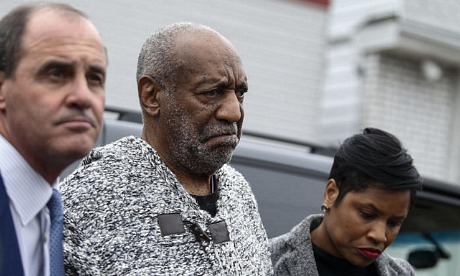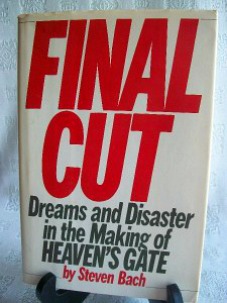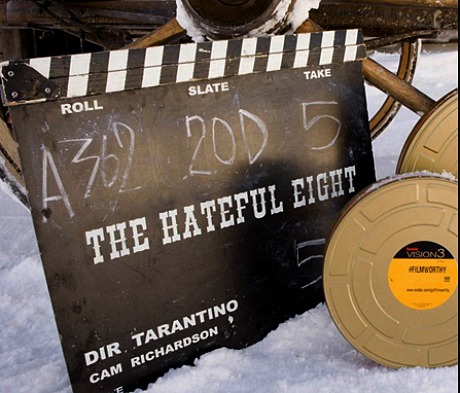I’ve been waiting for years for Blurays of The Big Sleep and Key Largo to come out, and now, finally, the moment is here. Germany Blurays of Howard Hawks’ jaunty 1946 noir and John Huston’s 1948 adaptation of Sherwood Anderson’s play will pop on 2.4.16, according to German Amazon. Which means, most likely, that an American distributor will issue same later this year. I have Region 2 player so why wait?
 Jeffrey Wells
Jeffrey Wells
“Don’t Fuck It Up”
In any creative enterprise the worst mantra you can repeat to yourself is “don’t fuck it up.” Those words are, of course, rooted in fear and a corresponding lack of confidence on the part of the artist. I know. In the late ’70s I tried to be a credible movie journalist while repeating these words over and over, fearful as I was of exposing myself as the marginally talented, somewhat under-educated guy I feared that I was deep down. Anxiety, insecurity and fear are jail cells. “Don’t fuck it up” did nothing but freeze my instincts and make me afraid of my own voice, and of what the world might think.
What are helpful words to go by when you’re creating? “Let’s see what happens if I fuck with this or fiddle with it in some fuck-all way” has always worked for me. Once you stop giving a shit, everything starts to flow. You can’t uncork artistic discovery if you’re too worried about disappointing your bosses or fans or whomever. If you overdo the fuck-all you can always formalize and clean it up, but you can never fix work that’s been created with a sword over your head.
From a 12.29 Reverse Shot piece by Eric Hynes: “This is the era of do-not-fuck-it-up. Ant-Man? It’s fine — at least Peyton Reed didn’t fuck it up. Batman v. Superman? Don’t fuck it up, Zack Snyder, like you did Watchmen. X-Men: Apocalypse? Let’s bring back Bryan Singer because he didn’t fuck up those first few X-Men movies. The first thing art director Nash Dunnigan told a fan-filled crowd at Museum of the Moving Image in advance of a screening of The Peanuts Movie? ‘Don’t worry, we didn’t screw it up.’
“It’s a Cosby Sweater! A Cosby Sweater!”
Bill Cosby has finally began to pay the long-overdue piper. He was charged in Pennsylvania today with “aggravated indecent assault” of Andrea Constand in ’04. Costand has told authorities that Cosby’s basic routine — “friendship”, offer of career help, drugging into unconsciousness followed by rape — happened to her at his Pennsylvania home 12 years ago. Distrcit Attorney Kevin Steele told reporters the charge stems from “new evidence” uncovered this year. The filing was just under the wire as the statute of limitations in this case expires next month.

Ob 12.8 The New Yorker‘s Jeffrey Toobin posted the following: “The comedian’s reputation has been destroyed in the course of 2015, as dozens (dozens!) of women came forward to say that he had drugged and sexually assaulted them. Cosby’s lawyers have denied most of the charges, when they have addressed them at all. But, in 2016, Cosby will suffer a lot more than bad publicity. A criminal investigation and multiple civil lawsuits are moving forward against him. The statute of limitations has been Cosby’s ally throughout his legal troubles, but the number and magnitude of the allegations should overwhelm him this year. It’s a good guess that Cosby will end 2016 in prison — and that he will end his life destitute.”
Likely 2016 Quality Contenders: Second Pass
Just over two weeks ago I posted HE’s first 2016 quality-film roster riff. My initial impression was that ’16 seemed light on the kind of films I prefer (i.e., smart, crafty, subtle, undercurrents, made for people with at least a high-school education and/or voracious readers). Now I’m realizing things are better than that. I’ll do a third pass in late January. What am I overlooking or mis-ranking? 22 films looking good to very good. Again, Wikipedia’s 2016 film roster + my recent Sundance ’16 preference list plus the following:
Highest Expectations (random order): David Gordon Green‘s Stronger; Martin Scorsese‘s Silence; Ang Lee‘s Billy Lynn’s Long Halftime Walk; Tom Ford‘s Nocturnal Animals. (4)
Genre Unto Themselves: Joel and Ethan Coen‘s Hail Caesar! (dry knucklehead period comedy) (1)
Beware of Highly Budgeted Asian Action Fantasy “Blockbuster”: Zhang Yimou‘s The Great Wall (1).
Very Interesting, Slight Hedging of Bets (random order): John Hancock‘s The Founder (biopic of McDonald’s kingpin Ray Kroc; Jodie Foster‘s Money Monster (political thriller); Woody Allen‘s 1930s period film (Steve Carell, Jesse Eisenberg, Kristen Stewart, Blake Lively); Damien Chazelle‘s La La Land; Robert Eggers‘ The Witch; David Michod‘s War Machine; Richard Linklater‘s Everybody Wants Some. (7)
Ten Days That Will Shake The World…This Is It!
My pulsebeat is racing, you don’t want to know what Scott Feinberg‘s is, and Sasha Stone‘s is probably off the charts. Academy Award nominations voting opened two hours ago and, as Jackie Gleason‘s Ralph Cramden might have said if he could time-trip from the mid ’50s to share in our profound excitement, “Hominah-hominah-hominah-hominah-hominah…!” Academy voters need to submit their nominations today, tomorrow (12.31) and over the first eight days of ’16. Oscar nomination voting closes at 5 pm Pacific on Friday, 1.8. And over the next 12 days (i.e., from now through 1.10) the shape of things as they more or less stand right now will be ratified by other ballots, nominations and final calls.
So this is really, really it, Paul Dano! People of taste and refinement are totally counting on you to carry the ball into the Best Supporting Actor end zone. Oh, and winning several Best Actor awards for your Brian Wilson performance is not a negative as a BSA contender — it’s a plus!
Annie Award online voting opens on 1.1.16 (go, Anomalisa!). On January 2nd the ACE Eddie Award nominations will be announced. January 4th is the DGA deadline to submit votes for feature film nominations…no more dithering!..as well as the WGA deadline for preliminary screenplay online voting. Great balls of fire will surge forth on Tuesday, January 5th, when the Producers Guild Awards nominations are announced along with the Art Directors Guild nominations. And if those aren’t enough, the National Board of Review Awards ceremony happens that night….pant, pant. On Wednesday, January 6th the final Golden Globes ballots from HFPA members are due, and the WGA’s Theatrical and Documentary Screenplay nominations will be announced.
Questions, Repetitions…Nobody’s Perfect
Nicholas Spargo‘s 12.23 YouTube essay didn’t persuade me that The Force Awakens is worse than the hated prequels, but it does point out several issues that are hard to dismiss. Above and beyond the similarities to Episode 4, I mean. Mostly logic disputes. Worth mulling.
Lame, Dishonest, Deranged
Yes, there is male genitalia in Anomalisa, and a chaste depiction of man-on-woman oral sex. But surely the MPAA’s CARA ratings board understands that this content is mitigated by the fact that the audience is looking at a recreation of male genitalia on a fucking puppet and that puppet-on-puppet oral sex is a wee bit different than watching live humans do the same. To be fair and upfront the MPAA’s explanation for the R rating should say that the film contains “STRONG SEXUAL PUPPET CONTENT” and “GRAPHIC PUPPET NUDITY.” Find me one Middle-American prude — one! — who will straight-facedly complain about naked puppets engaging in stop-motion simulation of intimate acts.

David vs. Goliath + Power Trumps Quality
At noted there are two making of The Godfather scripts on the Black List — Terry Clyne‘s I Believe in America and Andrew Farotte‘s Francis and the Godfather. There’s no question in my mind that Clyne’s is the superior work — cleaner, simpler, more compelling. But Farotte’s has a better chance of being made, I’m told, because CAA is representing it and is better positioned to cope with all the rights issues while Clyne’s script has no producer and no agent — just a manager representing Cline. David vs. Goliath.
To make either film a producer would have to get the rights individually from everyone in the script (Evans, Coppola, Pacino, et, al.) to proceed with any aspect of development or production. This is creatively a challenge as living characters always want creative control over their depiction — any depiction — which is not possible to give and still make a movie. And they will each want a lot of money. Each deal also has to be negotiated individually. I think Coppola is still repped by CAA so they probably already have his tentative approval on Francis and the Godfather along with Pacino, et al. And CAA will automatically prevent any other script in the marketplace from moving forward because they probably already control some of the necessary individual rights.
“Because They Hate The Movie, Michael”
I recently wrote of my admiration for Terry Cline‘s I Believe in America, a screenplay about the making of The Godfather. A day or two later a guy suggested that a script based on Steven Bach‘s “Final Cut: Dreams and Disaster in the Making of Heaven’s Gate” might be an even more compelling read. A sprawling, dialogue-driven, slow-motion calamity flick, set mostly in Hollywood and New York with occasional detours to the shooting set with fascinating, whip-smart dialogue and one of the most unusual villains of all time — director Michael Cimino. The instant I heard this my brain spun around, clicked its heels and said “yes!”


This could be a brilliant six-episode HBO or Netflix series, I’m thinking. Or a ten-episoder…whatever. Not long after posting about the Godfather script I was informed by a producer friend what a complete friggin’ nightmare it can be to produce films about the making of this or that classic film/play/anything if any of the principals are alive. I don’t know if getting the rights to Bach’s book (which of course was legally cleared when it was published 30 years ago) would lessen difficulties or not, but I’m dead certain that the entire world would stop whatever it’s doing to watch a miniseries about this catastrophic Hollywood saga. I got so high on the idea that I ordered a paperback version of Bach’s book — I haven’t read it in over three decades.
Synapses
My year-old 64 gig iPhone 6 Plus ran out of space so a couple of weeks ago I bought a slightly used 128 gig version. Now I’m dumping the 64 gig for $450. It cost me around $700 new not counting an extra $80 I just shelled out to fix the sound “so don’t even think of offering less than $450,” I said in my Craigslist ad. “This is an excellent deal for someone. I don’t need to sell it but I’d like to.”

The first nibble came in a half-hour ago. Our initial discussion went as follows (all punctuation exactly as received):
Possible buyer: “hello is this iPhone 6 Plus still for sale?”
Me: “Yes. My number, as I said in the ad, is ——-.”
Possible buyer: “That’s good the i need it to look like new cause my wifes birthday is fast approaching and i cannot afford a brand new phone at the moment so i would love to get her this phone once i am sure that it is in a good condition.”
(Several minutes transpire)
Me: “So do you want to see it or not?”
Possible buyer: “where are you located?”
Me: “Good God, man…the ad says West Hollywood.”
Honorable Failure
A growing consensus appears to be saying that more than just a few isolated problems have plagued the Ultra Panavision 70 roadshow presentations of Quentin Tarantino‘s The Hateful Eight. If anyone has any first-hand reports, please post them — but the word thus far has made the situation fairly clear. Private industry venues are one thing, but a significant percentage of commercial cinemas clearly weren’t up to the task. And this is no mark against Boston Light and Sound‘s Chapin Cutler, who was hired by the Weinstein Co. to make sure that the Ultra Panavision 70 showings went smoothly. There is no finer or more knowledgable projection technician in the world than Cutler, but he was facing an insurmountable situation. The technology wheel has turned, and there was only so much Cutler could do to remedy that.

Nobody loved this idea more than myself. But the 70mm projection I saw earlier this month at the Linwood Dunn didn’t look “wow” or “extra” by any visual standard I’m familiar with. It looked ripe and sharp but I could have been looking at a 35mm presentation — it just didn’t scream “70mm!” On top of which (this had been noted by just about everyone) Robert Richardson‘s cinematography doesn’t pop that much — not with two-thirds of it shot in a shadowy, basketball-court-sized cabin lit by lanterns, a fireplace and occasional windowlight.
“Vietnam Vietnam Vietnam, We’ve All Been There”
“‘Quakin’ and shakin’, they called it, great balls of fire, contact. Then it was you and the ground: kiss it, eat it, fuck it, plow it through with your whole body, get as close to it as you can without being in it or of it, guess who’s flying around about an inch above your head? Pucker and submit, it’s the ground. Under Fire would take you out of your head and your body too. Amazing, unbelievable, guys who’d played a lot of hard sports said they’d never felt anything like it, the sudden drop and rocket rush of the hit, the reserves of adrenalin you could make available to yourself, pumping it up and putting it out until you were lost floating in it, not afraid, almost open to clear, orgasmic death-by-drowning in it, actually relaxed. Unless of course you’d shit your pants or were screaming or praying or giving anything at all to the hundred-channel panic that blew word salad all around you and sometimes clean through you. Maybe you couldn’t love the war and hate it at the same instant, but sometimes those feelings alternated so rapidly that they spun together in a strobic wheel rolling all the way up until you were literally High On War, like it said on all the helmet covers. Coming off a jag like that could really make a mess out of you.” — page 63 of a dog-eared 1978 paperback version of Michael Herr‘s “Dispatches.”
